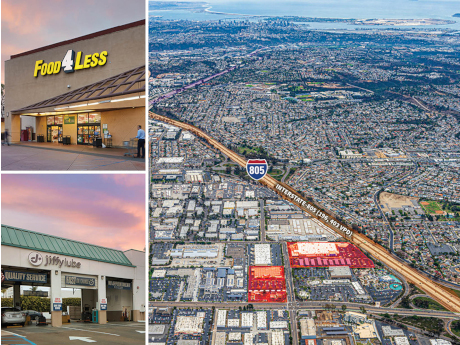By Chad Iafrate, Executive Director, and Phil Lyons, Managing Director, Cushman & Wakefield
Retail leasing and investment sales transaction volumes continue to increase in 2022. This growth trend began to surge in the second part of 2021 following the pandemic recovery.
Retail vacancy rates in San Diego County have decreased quarter over quarter to 5.9 percent, with vacancy lowest among power centers and strip centers. Asking rental rates, meanwhile, have increased across the county. This is primarily driven by significant rent growth at lifestyle centers (+5 percent from the previous quarter) and neighborhood centers (+2.8 percent). All major retail use categories seem to be back in expansion mode after four consecutive quarters of positive absorption. Pent-up consumer demand, stimulus and liquidity have all helped fuel growth plans in the retail sector with tenants continuing to try to make up for the lost year during the 2020 pandemic-related lockdowns.
Suburban shopping centers have been the beneficiary of the work-from-home model as employees who would typically frequent retailers near their offices have pivoted to restaurants and shops closer to their residences.
Investor confidence in retail centers also continues to increase, most notably from rising REIT activity and exchange buyers. Local retail investment sales volume had returned to pre-pandemic levels in the second quarter of 2021. During the first quarter of 2022, sales volume totaled $429 million, the highest quarterly total since first-quarter 2012. The average price per square foot reached $348 in 2022, the highest point since 2017.
In addition to this growth in retail leasing and investment sales, there are a number of high-profile, retail-oriented mixed-use projects that will take shape over the next few years. Notable developments include IQHQ’s more than 1.7-million-square-foot RaDD development on the waterfront in Downtown San Diego; the 1-million-square-foot redevelopment of Downtown San Diego’s Horton Plaza; SDSU West/Football Stadium redevelopment; and the proposed San Diego Sports Arena redevelopment.
Given the housing supply shortage in California, most local municipalities have adopted zoning overlays that allow for increased residential densities. This is fueling record prices for older shopping centers that can be redeveloped into mixed-use retail/residential projects. Mixed-use developers have paid premiums for older shopping centers outpricing traditional shopping center investors.
While growth has been strong so far this year, the headwinds continue to build with higher construction costs, labor challenges, material lead times, geopolitical unrest, inflation and increasing interest rates.
We are currently in a rapidly changing environment but anticipate activity to remain strong in the near term.


